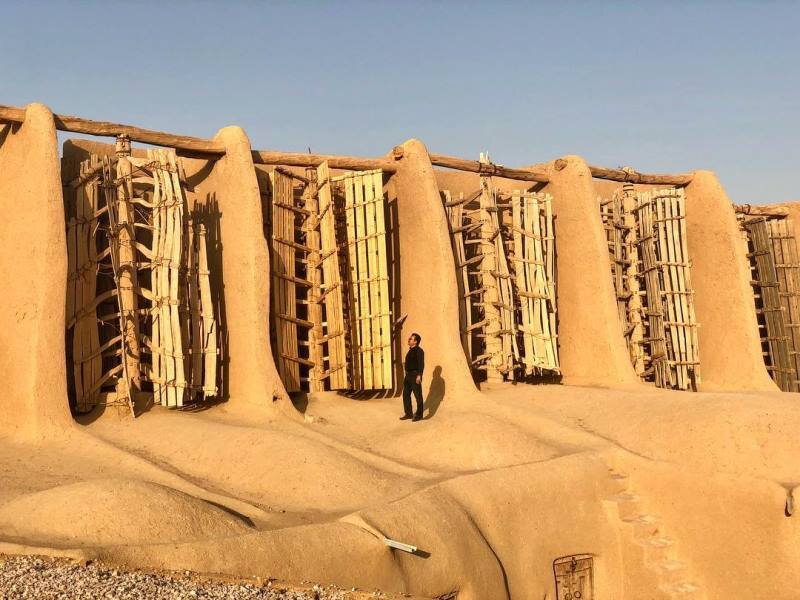Asbads, the windy pride of Nashtifan

In the tiny village of Nashtifan in northeastern Iran, one may feel an ancient magic inherited from preceding generations, a traditional technique to harness the wind power.
Made of clay, wood, and straw, the windmills, locally known as “Asbads”, are perched on a cliff overlooking the village, milling grain for an estimated 1,000 years there. They also bear testimony to the human being’s adaption with nature by transforming environmental obstacles into opportunities.
The windy pride of Nashtifan, the structures are doted on by an amiable custodian named Ali Mohammad Etebari, who estimates that parts of the earthen windmills are 1,000 years old.
“If I don’t look after them, the youngsters will come and spoil it and break everything,” Etebari said in an interview with the International Wood Culture Society in 2015.
Honored as a Living Human Treasure, Etebari has dedicated his life to keep the windmills spinning by the hard work of daily inspections and maintenance.
“I was a driver and I’ve been looking after this for the last 28 years,” he said.
“It’s the pure, clean air that makes the windmills rotate—the life-giving air that everyone can breathe.”
Asbad development took place due to strong and continuous 120-day winds, which annually sweeps through the east and southeast of the Iranian Plateau from late May to late September.
UNESCO says Asbad is a smart technique to grind grains, a technique which goes back to ancient times when the people living in the eastern parts of Iran, in an attempt to adapt themselves to nature and transform environmental obstacles into opportunities, managed to invent it.
Meanwhile, the Encyclopedia Britannica says the earliest known references to windmills are to a Persian millwright in 644 CE and windmills in Seistan [Sistan], Iran, in 915 CE.
In the early second millennium, some Eastern and Western states acquired the technology of making mills from Persia, though the prototype design constantly underwent amendments in the course of time.
The Ministry of Cultural Heritage, Tourism and Handicrafts has almost completed preparations for a chain of ancient vertical-axis windmills for possibly becoming a UNESCO World Heritage. Such vertical-axis windmills can also be found in Sistan-Baluchestan and South Khorasan provinces.
The sad part of the story is an unclear future for the windmills. Without due attention, the Asbads may fall into disrepair, maybe due to different beliefs and tastes of the younger generation.
AFM/MG
